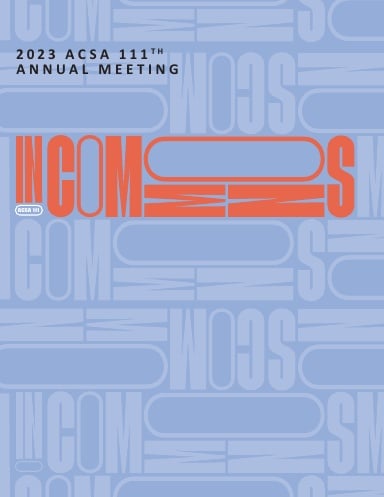Author(s): Soumya Dasgupta
My paper provides a theoretically situated framing of the global deployment of digital design tools vis-à-vis globalization of architectural productions in the context of rapidly transforming urban India in the 21st century. Following the economic liberalization of 1991, globalized architectural typologies such as shopping malls, residential enclaves, luxury hotels, and Information Technology (IT) hubs mushroomed throughout India’s urban spaces, changing its material and visual fabric.1 The digital revolution played a crucial role in this transformation, both through the systemic processes of global informatization and through the relatively less interrogated paradigmatic shift within architectural production techniques from analog to digital modalities.2 In the last two decades, emerging scholarship on Global South’s particular urbanities focused on the symptoms of these co-proliferating socio-spatial transformations, one emerging from the studies on the effects of neoliberalism and the second on informatization. Reacting to the shifting terrains of the architectural industry, design scholarship focused on the exigencies of architects acquiring advanced digital skill sets to meet market demands of efficiency, aptly captured as “innovate or perish.”3 Historians and urban scholars have extensively deliberated on the chronologies of India’s evolving IT landscape from the 1950s to the turn of the millennium and the digitization of urban governance and citizenship in the last decade.4,5 However, little theoretical deliberation exists to date on what software does to design in a postcolonial setting. Addressing this gap, I problematize the supposedly neutral front of digital design packages and argue that they reproduce the geo-architectural surroundings of their origins and aid in advancing globalized norms and techniques that homogenize architectural modus operandi. In lieu of focussing on the substantive dimensionalities of urban India’s architectural transformations with its specificities, I refer to ‘urban India’ as a site of a critical inquiry.6 To this end, I weave together theoretical concepts of global mnemotechnical systems and mimicry from the works of Bernard Stiegler and Homi Bhabha that can help explicate the encounter of the global deployment of architectural software as the industry standard in the arena of Global South’s architectural productions.7,8
https://doi.org/10.35483/ACSA.AM.111.34
Volume Editors
ISBN
978-1-944214-41-8

 Study Architecture
Study Architecture  ProPEL
ProPEL 
